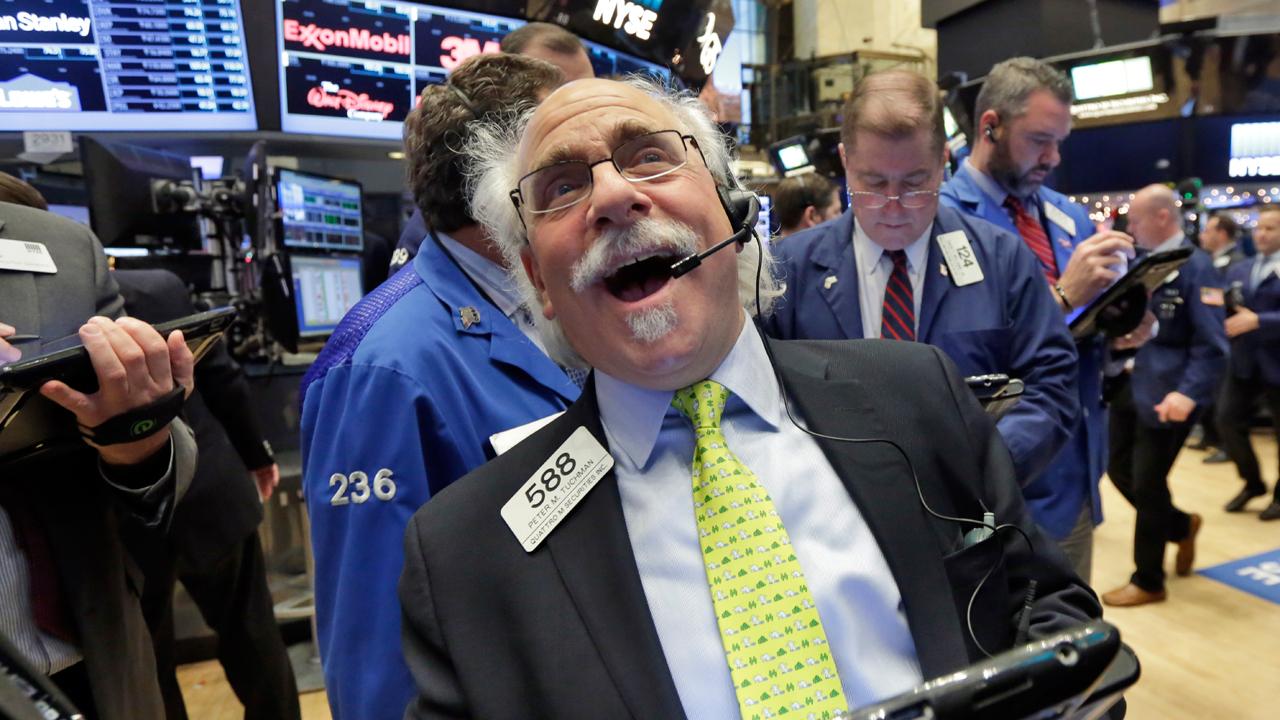As stock-market milestones fall, investors look ahead to the next record
What comes first, Dow 26,000 or a correction?
As equity benchmarks hit records on every single day of the New Year, investors appear increasingly focused on what record will be shattered next.
Among the week's historic achievements: the Dow Jones Industrial Average traded above 25,000 for the first time, and the S&P 500's string of consecutive records this week marked the best out-of-the-gate performance to begin a new year since 1964.
Even though the Dow's ascent carries more psychological than fundamental importance, it lifted the early January spirits--not that they needed much lifting.
"The only significance in my view is the speed with which a new level is reached," said Jamie Cox, managing partner for Harris Financial Group. "25,000 was lightning fast and I expect to [get to] 28,000 this year, as 3,000 points on 25,000 is only 12%. We are at the point in the index life cycle where it takes less horsepower to get to the next round number level."
Indeed, the period between the Dow's 24,000 and 25,000 mark was only five weeks.
One measure of investor sentiment hit its highest level since 2010.
The real question is how long can this go on for," asked Howard Silverblatt, senior index analyst at S&P Dow Jones Indices in a note. On the one hand there are supportive fundamentals, such as solid corporate balance sheets, earnings and the impending tax stimulus.
The fourth quarter earnings season starts next week Friday with financials.
Looking ahead, next week's economic calendar, including jobless claims for the first week of 2018 on Thursday and consumer inflation numbers on Friday, will give a more complete picture of how the economy did in December. Not to mention, it will inform the course of action Federal Reserve in normalizing its monetary policy, which could lift rates and weigh on stocks.
The December consumer-price index is expected to increase by 0.1%, while core CPI, stripping out volatile items such as energy, is forecast to expand by 0.2%.
The December jobs report on Jan. 5 saw nonfarm payrolls come in below expectations prompted some analysts question whether the Fed's median forecast of three interest rate increases in 2018 will prove accurate. The worse-than-expected data showed that while the unemployment rate remained at 4.1%, the U.S. economy only added 148,000 jobs in December, compared to the 198,000 expected.
This skepticism was only encouraged when Philadelphia Fed President Patrick Harker said he expected the central bank only to raise rates twice in 2018. So far so good, for stocks.
Still, "few are talking about an exit strategy, but if you don't have one you could be certifiable," Silverblatt wrote.
"Just remember, markets go the other way too from time to time, and it's been nearly two years since any notable pullback," said Greg McBride, chief financial analyst at Bankrate.com. "Don't be concerned--or surprised--when that happens, as long as the economic and earnings fundamentals remain positive."
